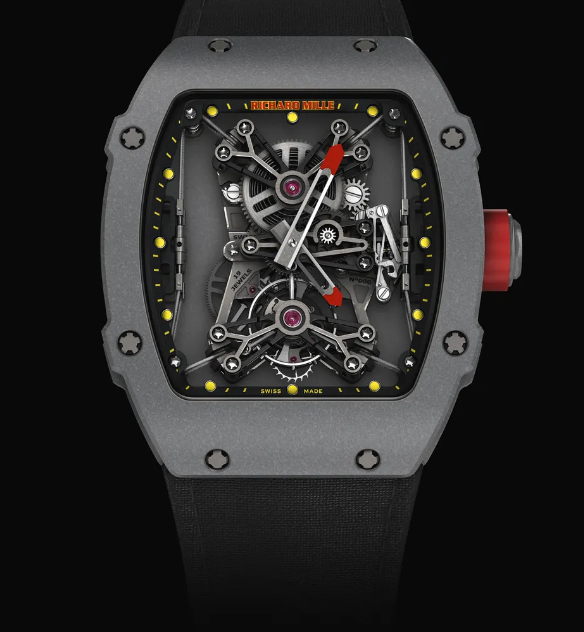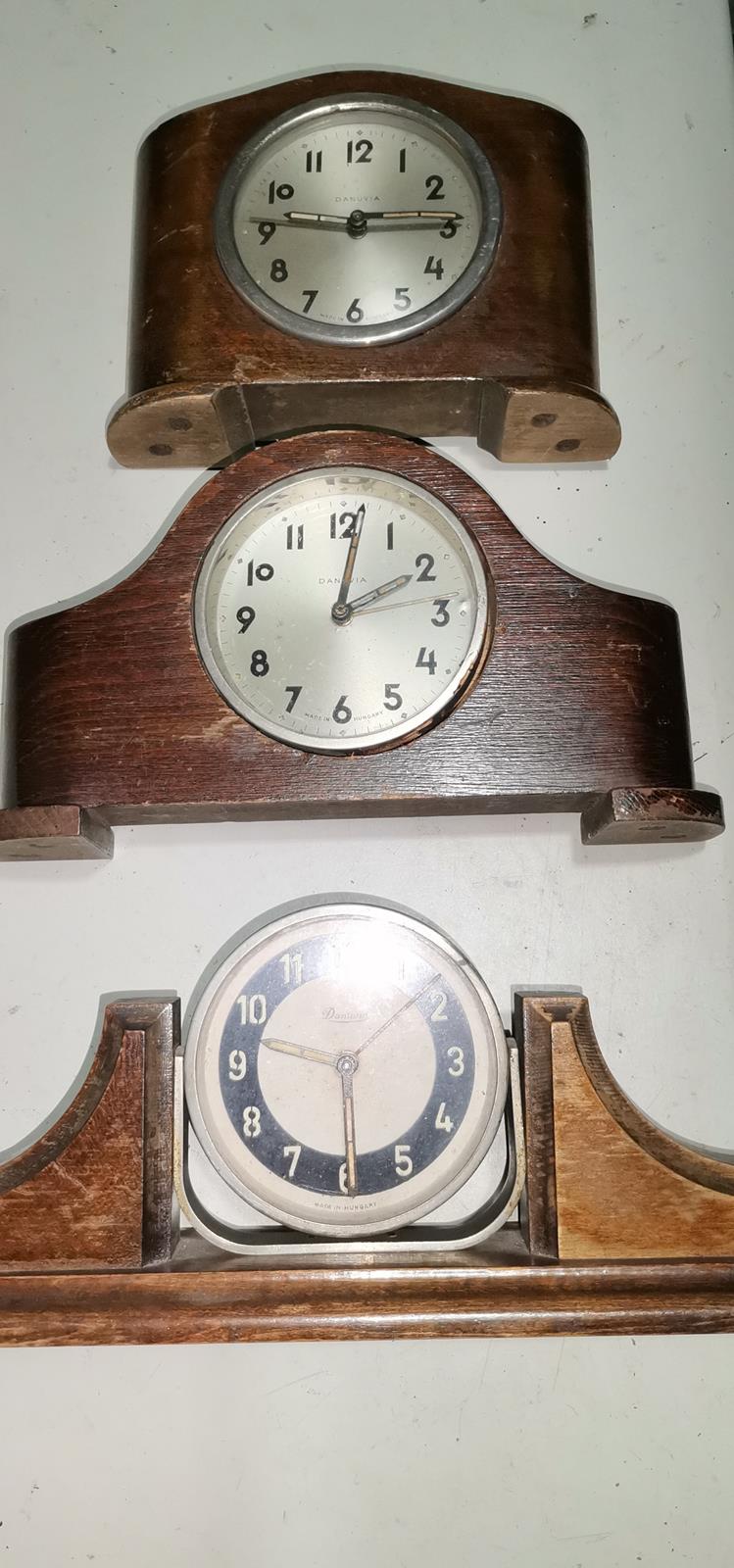Danuvia, fully known as Danuvia Engineering Industries Rt. (Hungarian: Danuvia Gépgyár – Danuvia Machinery Factory) was a Hungarian manufacturer founded in 1920 that produced firearms, ammunition, machine tools and motorcycles for the armies and markets of Central and Eastern Europe.
Danuvia was founded on 4 June 1920, by the Hungarian government, as an alternative to Fegyverés Gépgyár, to produce weapons for the Royal Hungarian Army and the Hungarian People’s Army in the 20th century, especially during the interwar period and World War II. Hungary at the time was under treaty following the defeat and dissolution of Austria-Hungary as a result of the First World War Treaty of Trianon, so the company was initially given the title of Danuvia Külkereskedelmi Rt – Danuvia Foreign Trade Co.
In 1938, Hungarian Prime Minister Kálmán Darányi announced the Győr Armament Program, aimed at modernizing the equipment and armament of the Royal Hungarian Army. In 1940, Danuvia operated and owned the Magyar Lőszerművek (Hungarian Ammunition Factory) factory in Veszprém to meet this new demand. During World War II, Hungary acquired the license rights for various German and other foreign weapons, which were produced at the Danuvia factories. In 1944, production at the Danuvia factories was largely halted due to the advance of the Red Army.
After World War II under the jurisdiction of the Soviet Union, Hungarian weapons development efforts declined under Soviet military standardization efforts and preferential treatment for Soviet weaponry by Hungarian Communist Party General Secretary Mátyás Rákosi, such as the PPSh-41 mass produced.
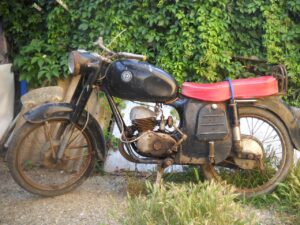 From 1954 to 1966, Danuvia also manufactured motorcycles. The Danuvia factories were based in Budapest’s Zugló district on Angol utca (“English Street”). Danuvia was eventually disbanded in 1998, selling the intellectual property for their products to companies such as Intermodul Weapon Shops.
From 1954 to 1966, Danuvia also manufactured motorcycles. The Danuvia factories were based in Budapest’s Zugló district on Angol utca (“English Street”). Danuvia was eventually disbanded in 1998, selling the intellectual property for their products to companies such as Intermodul Weapon Shops.
During the era of Danuvia arms production, the company employed several prominent Hungarian arms designers, including Pál Király, inventor of the Danuvia 39.M and Danuvia 43M submachine guns, József Kucher – inventor of the Danuvia M53 K1 submachine gun. and Róbert Vörös, inventor of the Danuvia VD-01 pistol. In addition, it was the manufacturer of the Danuvia brand of motorcycles from 1954 to 1966.
The clockwork ignition production setup was a completely new branch of production in Budapest. The clock face was a structure belonging to the anti-tank anti-aircraft artillery grenade, which regulated the explosion time of the grenade. Preparations for production began in 1939, and the necessary equipment was obtained from Switzerland. According to the agreement with the Swiss companies, Danuvia was not allowed to produce watches with the purchased devices. Production began in 1940, first for the Hungarian army and then for the German army. At the beginning, the capacity was 500 pieces per day, this amount was already doubled in 1941… [During the war, these structures were produced continuously.]
The watchmaking ignition department that remained in Budapest operated until January 2 [1945] On the night of January 5-6, 1945, a Soviet combat unit of 10-12 men occupied the factory… From January 15, 1945, Danuvia he worked for the soviet army repairing weapons and for the hungarian democratic army…
Establishing the factory’s peace profile was ultimately decided by its involvement in repair deliveries. On May 25, 1945, at the request of the Ministry of Industry, the management of the factory assumed the delivery of table clocks. According to the order issued on June 25, 1945 following preparatory negotiations, “for the damage caused by Hungary to the Soviet Union during military operations and the occupation of Russian territories”, according to the contract concluded on June 15, 1945, 300,000 table clocks must be delivered by January 1, 1946 to a monthly rate of 60,000 pieces.
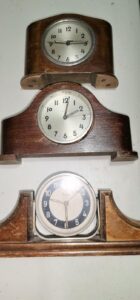 The program decided the peace profile of the Danube for a longer period of time. The management of the factory assumed, among many other considerations, that the ignition production department of the watchmaker remained more or less intact and that with certain modifications it might be able to produce watches as well. In addition, the production experience already developed in this area was also taken into account.
The program decided the peace profile of the Danube for a longer period of time. The management of the factory assumed, among many other considerations, that the ignition production department of the watchmaker remained more or less intact and that with certain modifications it might be able to produce watches as well. In addition, the production experience already developed in this area was also taken into account.
The program decided the peace profile of the Danube for a longer period of time. The management of the factory assumed, among many other considerations, that the ignition production department of the watchmaker remained more or less intact and that with certain modifications it might be able to produce watches as well. In addition, the production experience already developed in this area was also taken into account.
It is known that switching to a new type of product always requires serious preparation and the creation of material and technical conditions. When watch production began in the summer of 1945, these conditions did not exist, or only to a very small extent. Therefore, the establishment for watchmaking and then the start of production brought a stormy era in the life of the factory, full of many difficulties and struggles.
A working group was established in cooperation with the Ministry of Industry to carry out the production of watches, whose task was, among other things, the delivery of raw and semi-finished materials, while Danuvia carried out the processing of the parts and the assembly. of watches. Already in the summer of 1945, it became clear that the delivery of the first batch of 60,000 could not take place in time. The samples stipulated in the contract were completed only on 21 August, which, however, were not accepted by the Soviet receiving bodies due to the lack of springs and gears of suitable quality. By the beginning of September the appropriate samples could be made, but in the meantime it became clear that the Hungarian industry – which was not equipped for watchmaking anyway – could not supply the right quantity and quality of components, especially springs, and even certain tools were missing.
 After lengthy preparations that began in the fall of 1945, it was not until December that company representatives were able to travel to Switzerland and purchase bows and tools from there…
After lengthy preparations that began in the fall of 1945, it was not until December that company representatives were able to travel to Switzerland and purchase bows and tools from there…
The factory’s technical and commercial management could not cope with watch production, so much so that on August 1, 1946, the Clearinghouse canceled the entire watch order due to non-performance. This move was justified due to the non-fulfilment of deliveries, but it endangered the entire existence of the plant…
On September 16, at the works council meeting, president József Häusler announced that the company was in a catastrophic situation and that the works council could not fulfill its promise to pay wages. At the last moment, the General Economic Council rushed to Danuvia’s aid, offering the company a transitional loan of one million five hundred thousand forints…
The transitional loan received in September 1946 temporarily stabilized the company, covered a significant part of the costs of switching to watchmaking and tooling, and made it possible to pay employees’ wages.
Watch production was very slow to reach profitability. This quantity was marked by the auditors sent by the General Economic Council as a daily production of 600 pieces. In the mass production of watches, many obstacles had to be overcome due to the inaccuracy of the machines, unevenness and poor machinability of the material.
In November, 19,000 hours were produced. Uneven production is characterized by the fact that in the first half of the month 7,972 units were produced, and in the second half of the year, 11,000 units. In the first half of the month, 4,935 units were defective, and even after the correction they were scrapped for over a thousand hours. This production of 19,000 units would have already ensured profitability, but production continued to fluctuate and sales caused a lot of problems in particular.
The total number of watches delivered during 1946 was 14,716, of which only 6,435 were delivered as compensation, and 7,161 were sold…
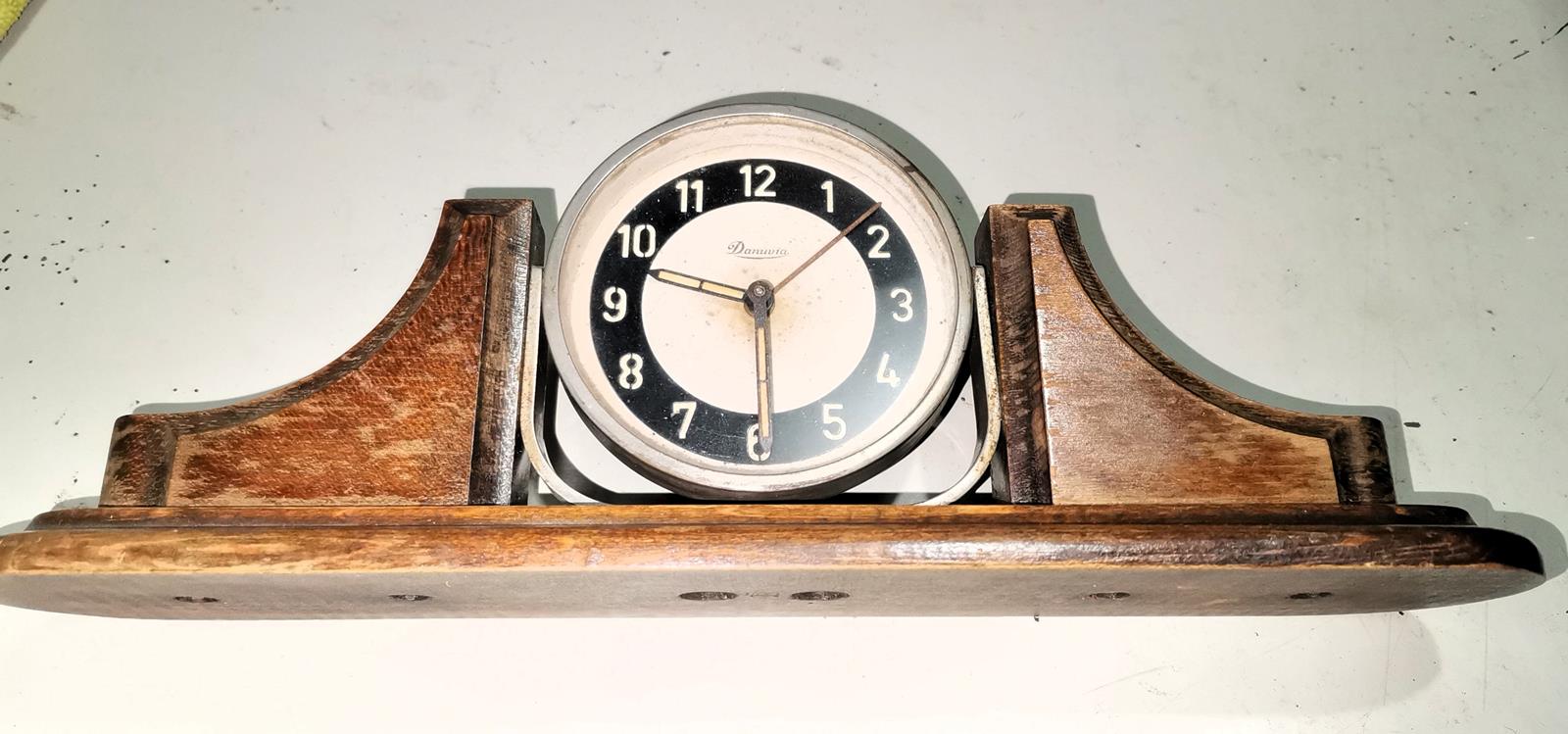 The question rightly arises: was the setup for watch production correct? The question was decided by necessity… In favor of the justice of the decision was the fact that in Hungary this type of clock – primarily an alarm clock – was not manufactured. The quality of the watches produced by Danuvia was satisfactory, all tests qualified the watches as competitive, even for foreign markets. There were also opinions that they are too accurate, their quality is 41% better than Junghaus watches.
The question rightly arises: was the setup for watch production correct? The question was decided by necessity… In favor of the justice of the decision was the fact that in Hungary this type of clock – primarily an alarm clock – was not manufactured. The quality of the watches produced by Danuvia was satisfactory, all tests qualified the watches as competitive, even for foreign markets. There were also opinions that they are too accurate, their quality is 41% better than Junghaus watches.
The management of the company made great efforts to solve the problem of watch sales. In the second half of 1946, export negotiations began, promising serious prospects. In Austria and Switzerland, they managed to sell 20,000 watches, favorable negotiations were also held regarding deliveries to South America. There was interest in the delivery of around 20,000 watches from Swedish and Danish business partners. The export price was around 4.5 dollars. As a result of the export negotiations in late 1946 – early 1947, there was the prospect of orders to ensure employment of the factory for 4 – 5 months.
However, the year 1947 was still full of struggles and difficulties. The technical management, in cooperation with the works council, set the goal of increasing watch production to 20,000 pieces per month. However, this goal proved to be unrealistic during the year. The fluctuation in production was extremely high, 4,200 watches were produced in the last week of June 1947, 12,432 in July and only 7,536 in August. According to the original plan, 16,000 watches were to be produced in June, 18,000 in July and 20,000 in August. The August production did not even reach 50% of the budget. The main reason for the delay was the lack of raw materials…
The sale of watches continued to create a lot of problems. The domestic market was able to absorb a quarter of it, new and new difficulties constantly arose around exports. According to the contract with the company, internal sales were carried out by Órakereskedelmi Rt. Órakereskedelmi took the watches from Danuvia for 52 HUF and put them on the market at 92 HUF, with a profit of almost 100%. At the same time, Danuvia sold the watches at a loss, the factory cost was around HUF 60. In August 1947, when the contract with Orakerekseldelmi expired, the works council took the position in favor of establishing its own trade body, but the higher bodies did not agree to this. After long negotiations, Órakereskedelmi Rt. agreed to sell 42,000 watches and also agreed to deliver 15,000 watches to the countryside for Hangya and 15,000 watches for NIK [Heavy Industry Center] and MÁSZ (Hungarian State Coal Mines) employees at a reduced price. Export also encountered obstacles, the Hungarian watch was completely new to the world market. On March 1, 1947, the Swiss representative of the factory demanded, among other things, that the watches be at least marked with “alarm clock made of Swiss parts!”. The price turned out to be high, the structure was too good compared to alarm clocks. Before the war, the alarm clock was mainly a mass product of German manufacture, with pressed gears, drawn profile steel drive wheels.
 The unfavorable picture was softened by the apparently better prospects. The development of watch production was completed in December 1947, according to plans, 25,000 watches were to be produced in January 1948, 34,000 in February and 40,000 watches per month from March. This volume of production not only ensured the coverage of expenses, but also assumed the formation of working capital. Export opportunities were also favorable. There was a contract for 170,000 watches for Holland, 12,000 for Sweden and 10,000 for Italy, an American order for about 100,000 watches was on the horizon, negotiations were underway to deliver another 200,000 watches to Holland, Ceylon and 16,000 watches . 120,000 watches were reserved for domestic sale, and the General Economic Council put into perspective approx. the order of two thousand block watches worth five million forints…
The unfavorable picture was softened by the apparently better prospects. The development of watch production was completed in December 1947, according to plans, 25,000 watches were to be produced in January 1948, 34,000 in February and 40,000 watches per month from March. This volume of production not only ensured the coverage of expenses, but also assumed the formation of working capital. Export opportunities were also favorable. There was a contract for 170,000 watches for Holland, 12,000 for Sweden and 10,000 for Italy, an American order for about 100,000 watches was on the horizon, negotiations were underway to deliver another 200,000 watches to Holland, Ceylon and 16,000 watches . 120,000 watches were reserved for domestic sale, and the General Economic Council put into perspective approx. the order of two thousand block watches worth five million forints…
After the end of the war, due to the cessation of weapons production, the factory switched to the production of a new product – the alarm clock. The factory workforce at the time of nationalization [March 1948] maintained an average monthly output of 13,000 watches. After solving the technical and organizational tasks, the company set out to increase production and reach the production of 40,000 alarm clocks per month. This was already achieved in the first month after nationalization with the labor of the workers, and thus they were able to take the 40,001st watch with them to the parade on May 1, 1948. After that, the factory produced this planned quantity of 40,000 every month.
But the domestic market was not able to absorb the entire production of the factory, and the private firm that handled the export of Danuvia’s watches was not prepared to sell such a quantity. The possibility of export was also hampered by the fact that German watch factories damaged during the war resumed production and flooded the Western market with their watches. Therefore, in a few months, more than 300,000 watches accumulated in the warehouse of the factory. At that time, on the initiative of the industrial management, the head of the company and the owner of the export company went on a tour of Western Europe and managed to sell the accumulated stock – somewhat below the world market price.
At the same time, it became obvious that in the given market conditions – primarily due to the weak absorption capacity of the domestic market – Danuvia must switch from the production of watches to the production of new, more profitable products. It is a fact that Danuvia has serious merits in the fact that watchmaking established itself in Hungary, as the Danuvia design is still produced today with minor modifications.
[Danuvia handed over its unused and semi-finished equipment and parts to the MOM watch factory. Among the products from MOM are alarm clocks made with original Danuvia movements. After several product developments, MOM also produced alarm clocks until the late 1980s.]
Never miss a story that matters. Subscribe to our newsletters!


